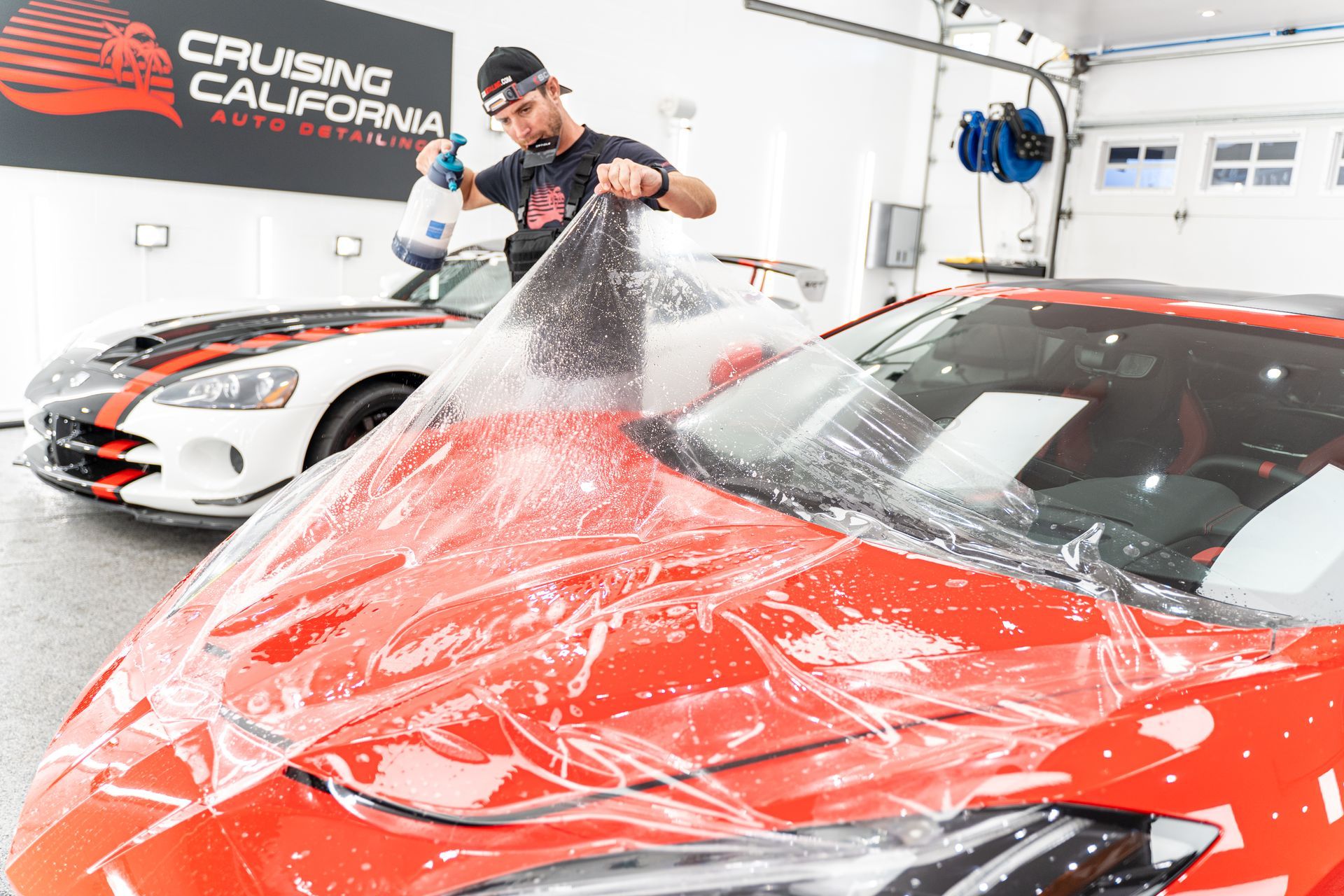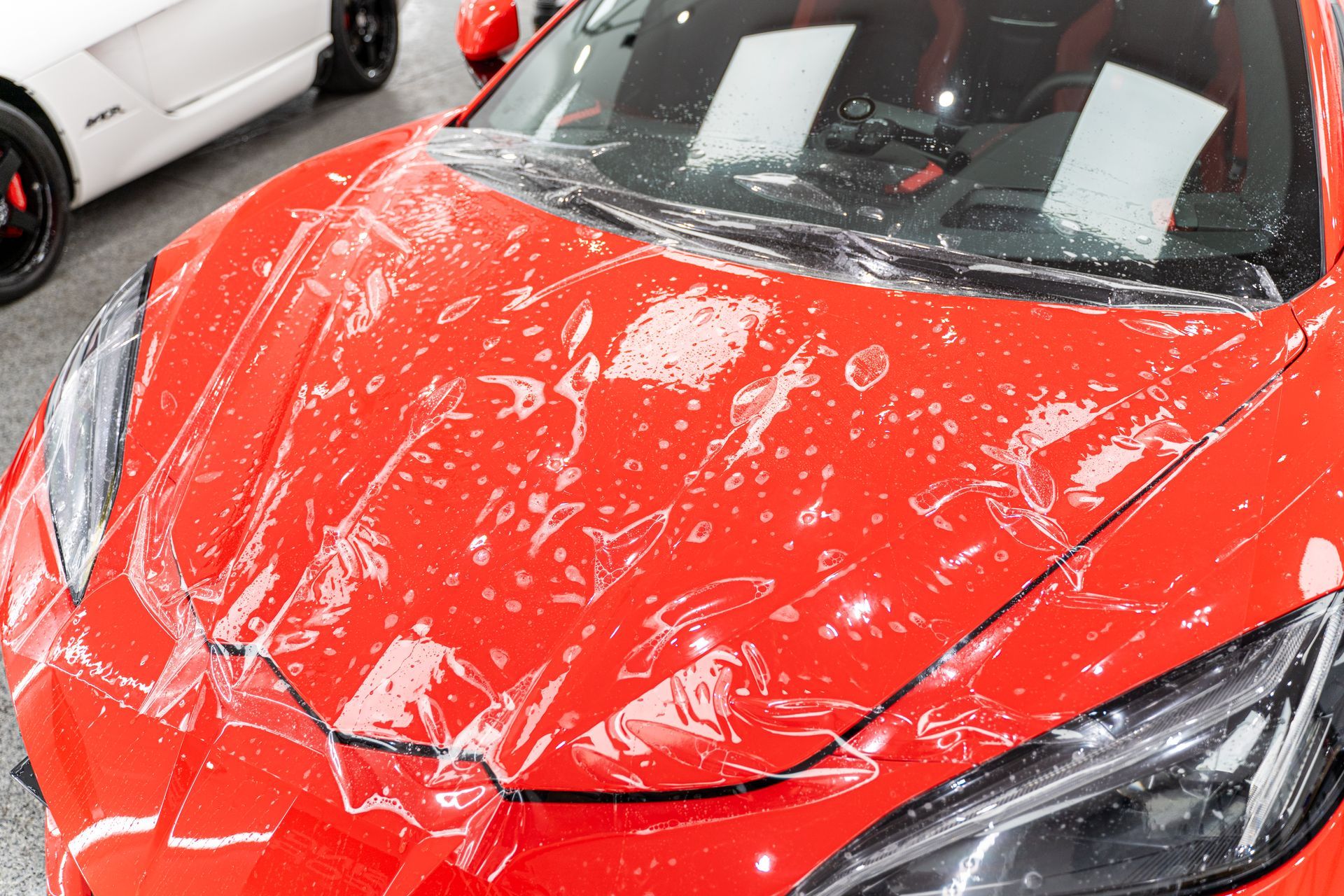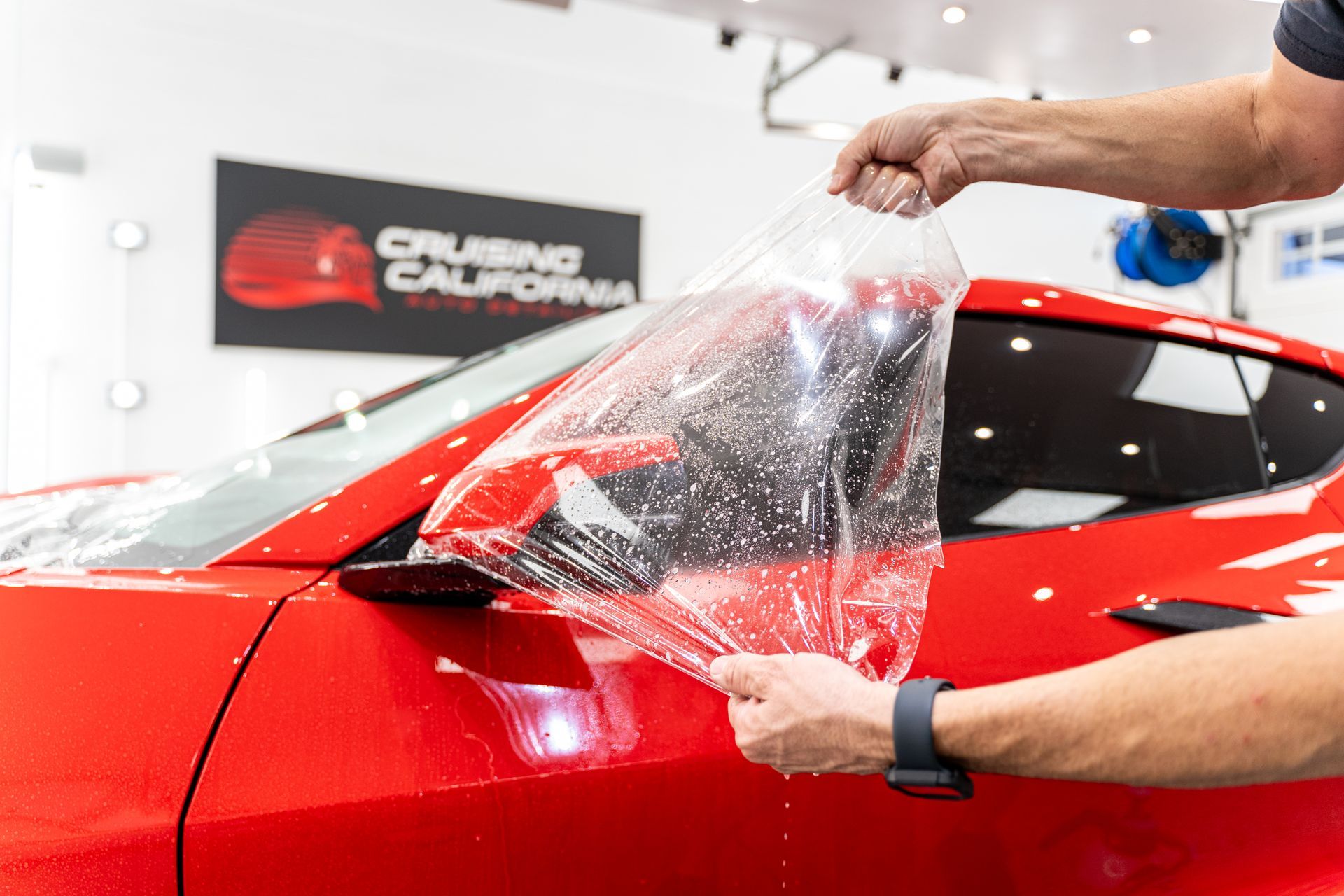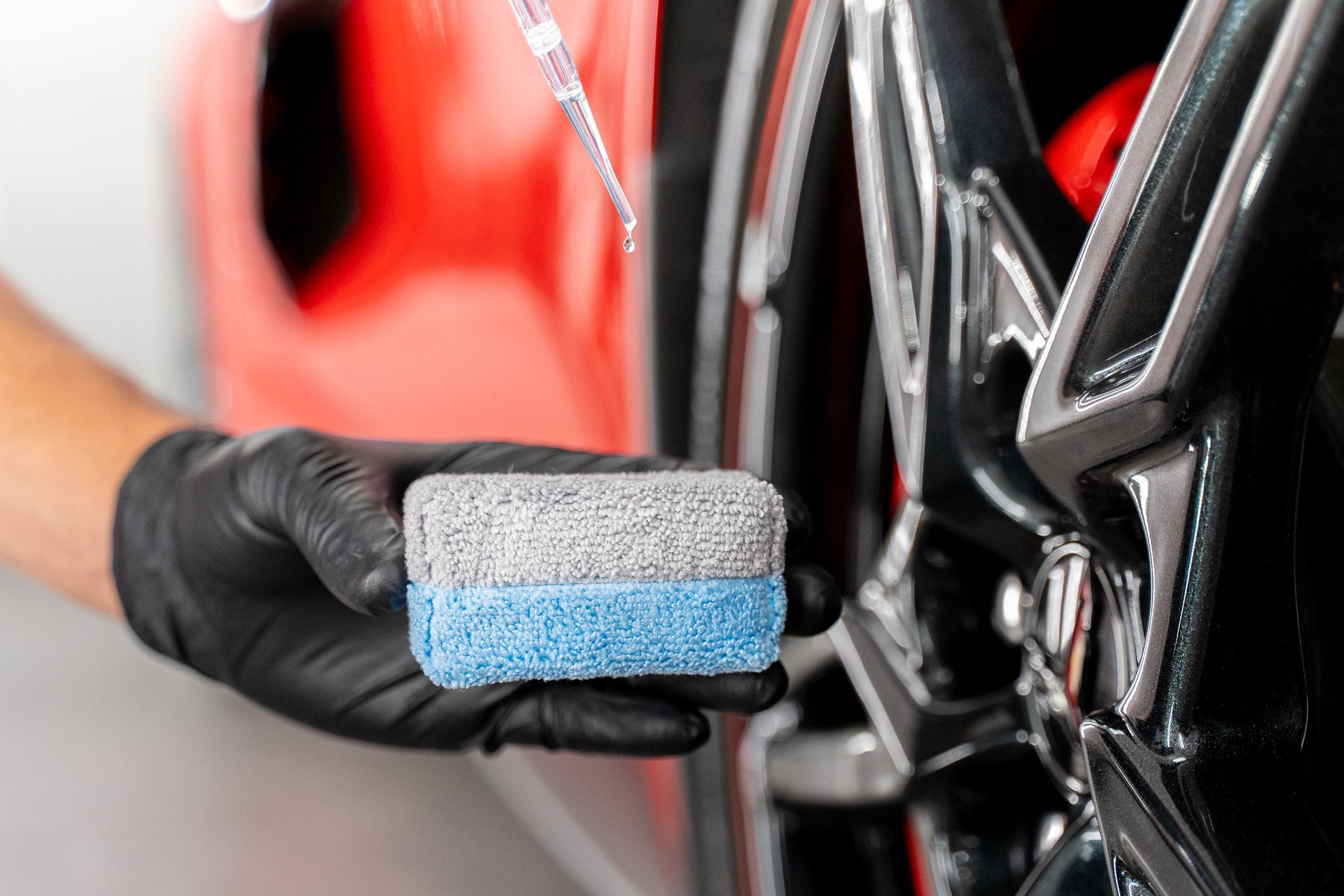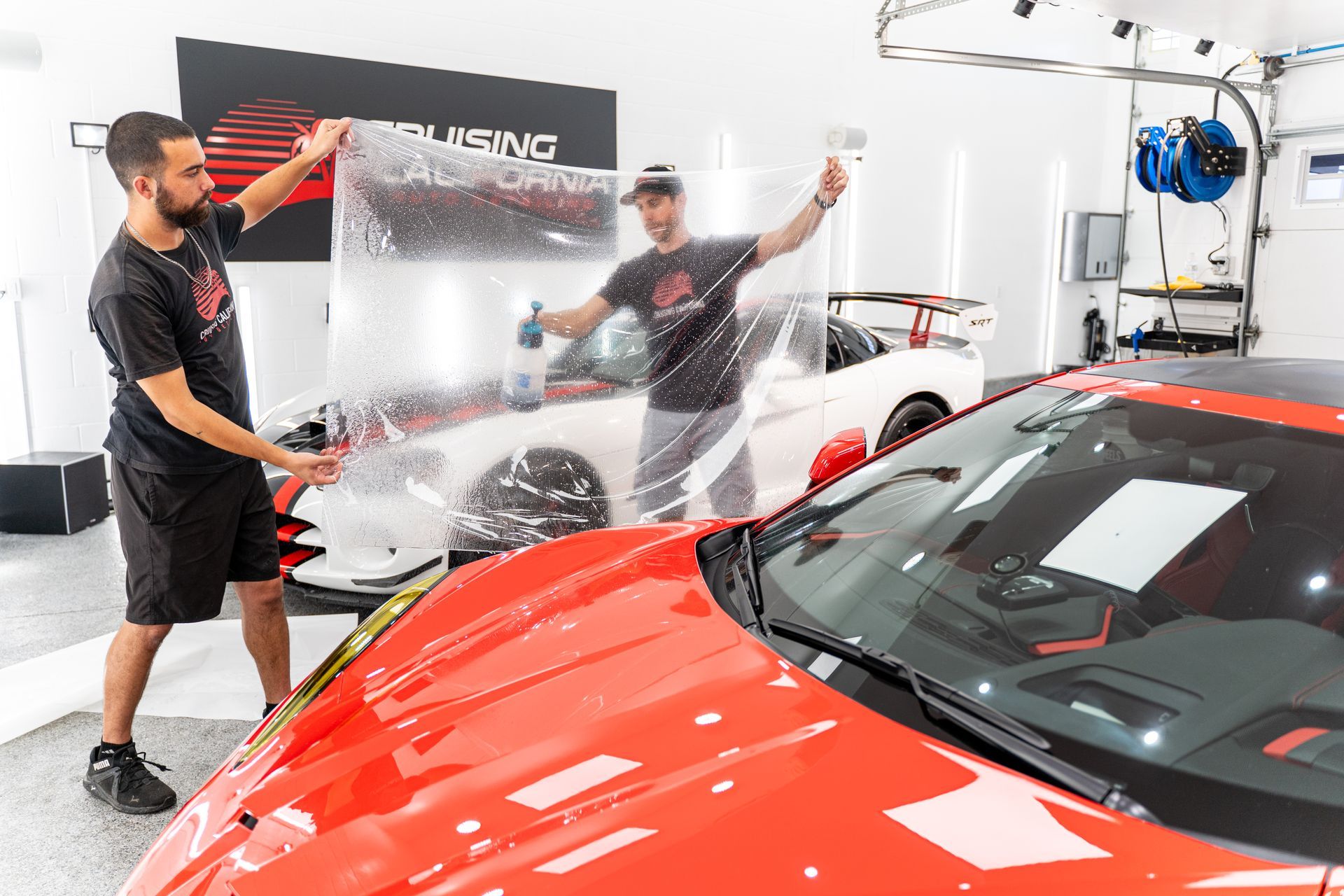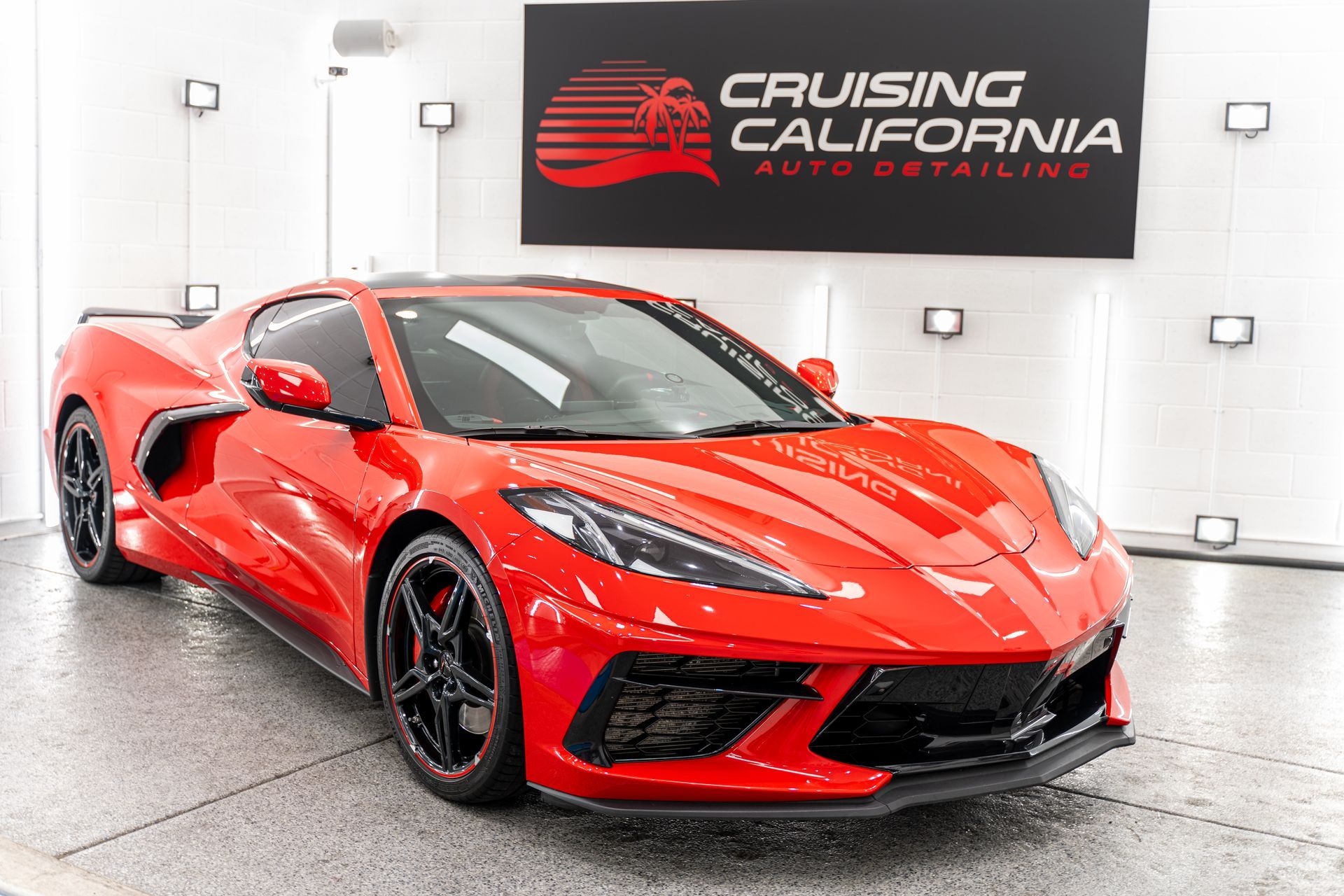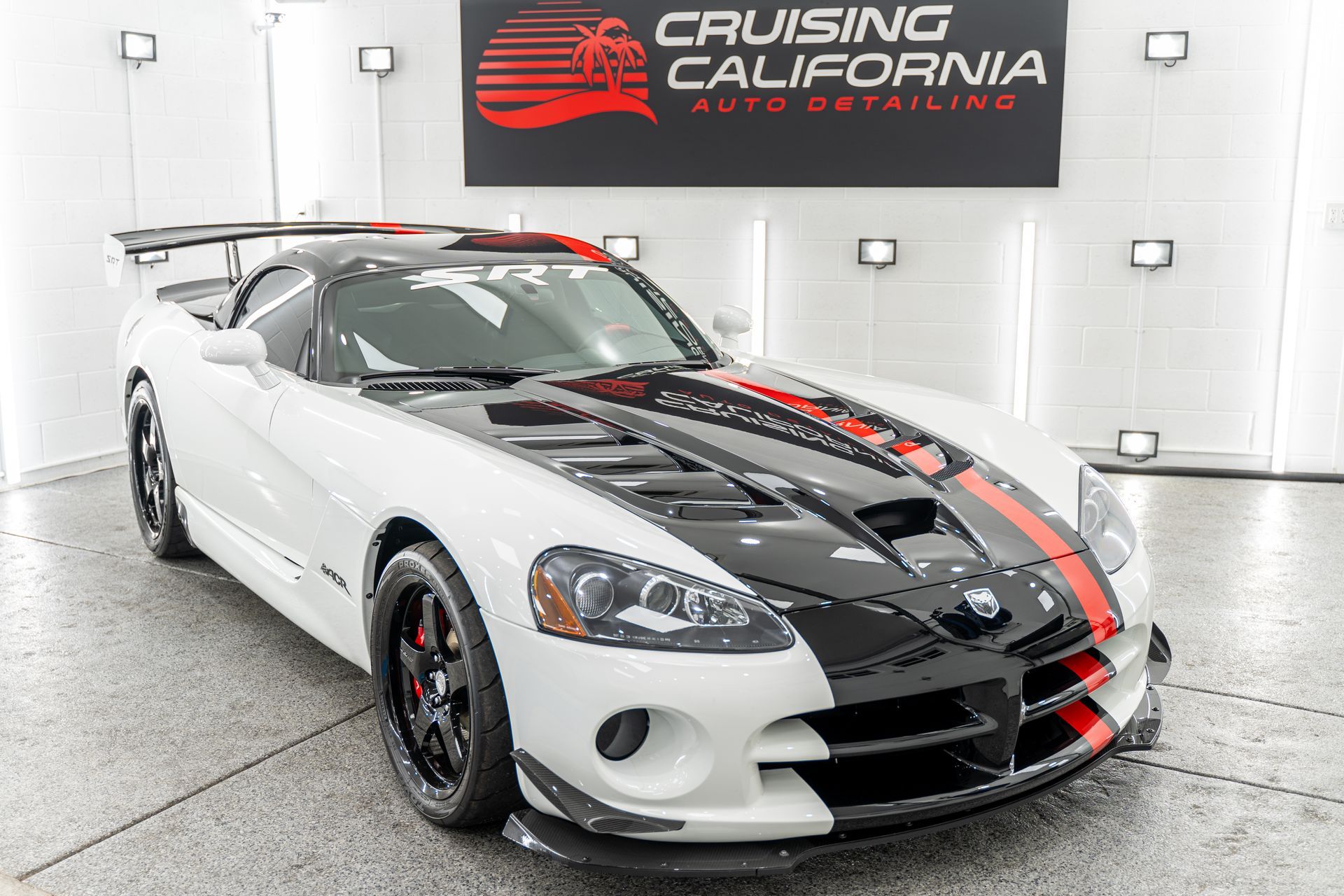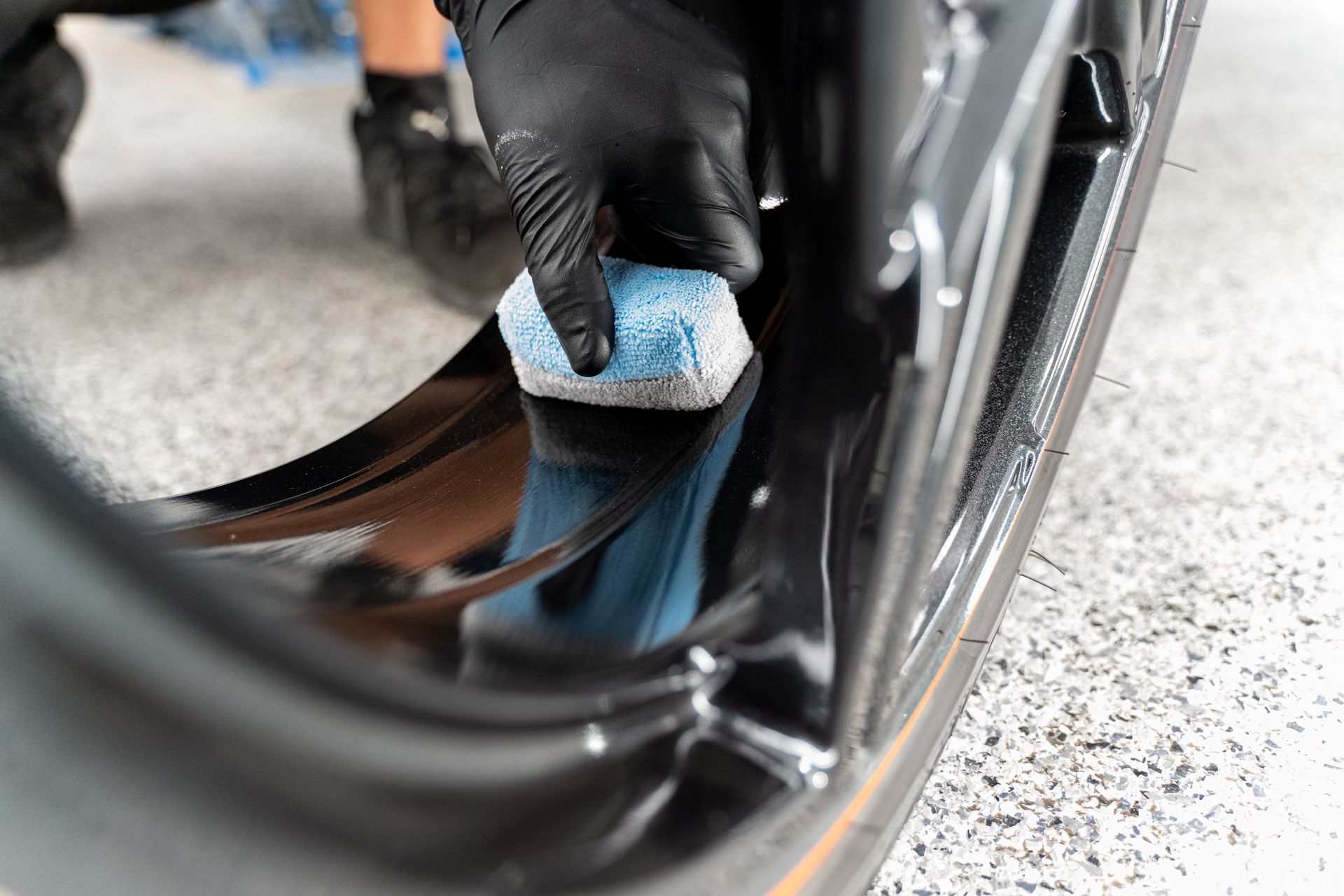When it comes to protecting your car, many of us think about getting insurance or choosing a reliable mechanic. But what if I told you that an invisible shield could help keep your vehicle looking brand new? Paint Protection Film (PPF) is here to save the day! This amazing product acts like a clear coat, guarding your vehicle against everyday dangers such as road debris and harsh UV rays without changing its appearance. Having spent countless hours researching and trying out different protection methods myself, I'm excited to share why PPF stands out as one of the best investments for your car. Let’s dive into what makes PPF such a smart choice for safeguarding those essential bumpers and hoods!
To protect your vehicle's bumpers and hoods with Paint Protection Film (PPF), first, choose a high-quality PPF product that is designed specifically for automotive use. Next, ensure that the surface is clean and free of contaminants before applying the film meticulously to avoid air bubbles, thus creating a durable protective layer against scratches and road debris.
Why Choose Paint Protection Film?
First and foremost, PPF offers unparalleled durability. This advanced polymer film provides a barrier between your vehicle's paint and the harsh elements often encountered on the road. Think of all the dirt, grime, bird droppings, and UV rays your car faces daily. Rather than allowing these aggressors to chip or stain your vehicle's beautiful finish, PPF acts as a shield, absorbing the brunt of these attacks. What’s impressive is that this protection doesn’t diminish after a wash or two—it remains effective for years.
PPF isn’t just robust; it’s also remarkably versatile. Reputable brands have engineered films that not only protect but also enhance the appearance of vehicles. Their self-healing properties mean that light scratches vanish under heat exposure, creating an illusion of an ever-fresh coat. This longevity means fewer trips to the body shop for touch-ups or repairs.
In contrast to traditional waxes or sealants that require frequent reapplication—often every few weeks—PPF can provide years of protection without much effort beyond initial installation. It remains in place through various weather conditions and environmental challenges, granting you peace of mind. This ease also translates into convenience: once installed, you can focus on enjoying your car rather than worrying about maintaining its pristine finish.
Performance Over Time
Another remarkable aspect of PPF is its ability to significantly reduce paint damage over time. According to CarCarePro's report, vehicles with PPF experienced a 70% reduction in paint damage over five years compared to unprotected alternatives. Imagine investing a little now for substantial savings later in repair costs and maintenance—PPF pays dividends in the long run.
Additionally, it’s worth mentioning how PPF can help maintain your vehicle's resale value. A well-cared-for exterior tends to impress potential buyers. Cars with visible signs of wear often intimidate prospects; they may wonder what other hidden issues might lurk beneath the surface. On the other hand, a maintained vehicle with PPF showcases careful ownership. It signals that you valued and protected your investment. With these myriad benefits in mind, we shift our focus to practical strategies for ensuring your vehicle remains shielded from damage while enhancing its overall appeal.
Protecting Bumpers and Hoods
The bumpers and hoods of your car serve as its armor, facing everything from minor scratches to significant impacts from debris on the road. Given their constant exposure, these areas require special attention, especially regarding paint protection film (PPF). Applying PPF acts like a shield, safeguarding against chips, UV rays, and various environmental elements that could mar the finish over time. While applying the film is crucial, understanding how to prepare your vehicle properly will ensure a successful result.
Steps to Protect Your Bumpers and Hoods
To begin with, it's essential to clean the surface thoroughly. When I say "thoroughly," I mean leaving no stone unturned—even small dirt particles can lead to bubbles and imperfections in the film once applied. Use gentle car wash soap, warm water, and microfiber cloths to scrub away any grime or old wax lingering on the surface. Rinsing well and ensuring everything is dry before moving on is key; dampness can ruin adhesion later.
After ensuring that the surface is pristine, you're ready to select your PPF. Choosing a high-quality PPF specifically designed for your vehicle is next. Not all films are created equal—certain types are better suited for specific makes and models, while others may offer added benefits like self-healing properties that can mend minor scratches over time. My advice? Don’t skimp on quality here; investing in superior film means investing in lasting protection.
Once you have your material prepared, it’s time for application. Before laying down the film, spray a positioning solution onto both the hood or bumper and the adhesive side of the film. This allows for easy adjustments during application—ensuring you can slide it into place without difficulty. Having worked on my own vehicles, I've found this step invaluable; it gives you a bit of breathing room to achieve that perfect alignment.
With everything set up, it's time to commit to installation. As you apply the PPF, use a squeegee with firm but gentle pressure to smooth out any air bubbles or creases that might form underneath. Remember, patience is key! It's easy to get anxious during this stage, but rushing only results in more work down the line. If you spot a bubble forming, take a moment aside to poke it with a pin and gently smooth it out.
Now that the film is securely in place, let’s talk about what happens next. Allowing the PPF to cure is essential for optimal bonding with your vehicle’s surface. Generally speaking, this process may take around 48 hours; be sure not to expose it to rain or wash it during that time. I often find it helpful to park my car in an area out of direct sunlight during this period, thereby preventing heat-induced distortion of the film.
These careful steps build a sturdy defense against wear and tear on your vehicle's front-end area as we transition into examining the various threats that can compromise vehicle paint.
Common Threats to Vehicle Paint
Vehicle paint is far more vulnerable than many realize. Every time you drive, you're putting your car through a gauntlet of potential hazards. Road debris, including small stones and gravel, can effortlessly chip away at the paint, especially when you're cruising down highways or poorly maintained roads. These chips are not just cosmetic issues; they expose the underlying metal to rust and corrosion, creating larger problems down the line.
On top of that, there's UV exposure; the sun's rays can be relentless. Over time, prolonged exposure can cause the paint to fade significantly, losing its original shine. You might think that your vibrant blue paint will last forever, but just like a favorite shirt left out in the sun, it gradually succumbs to fading. The result can be a car that looks more worn-out than loved after just a few summers.
And who hasn't experienced the unpleasantness of bird droppings splattering on their freshly washed cars? It’s not just gross; those droppings are highly acidic and can wreak havoc on your paint job. If neglected, the acid in the droppings can literally eat into your paint surface, leaving behind marks that are nearly impossible to remove. Another insidious culprit is acid rain, which often goes unnoticed until it's too late. This corrosive precipitation eats away at the outer layers of your vehicle’s paint, causing etching that compromises the protective finish and makes your car susceptible to more damage from environmental factors.
A staggering 65% of paint damage is attributed to road debris alone according to a survey by AutoBody Magazine, highlighting why taking these threats seriously is essential for maintaining your vehicle’s appearance and longevity. By recognizing these common threats, you can implement better protective measures for your vehicle. This could involve applying a high-quality paint protection film (PPF) or routinely waxing your car. Regular maintenance acts not only as a deterrent against these damaging elements but also preserves the resale value of your vehicle.
Understanding these vulnerabilities lays the groundwork for exploring effective protective solutions that can safeguard your vehicle against everyday threats.
The Invisible Barrier of PPF
One of the standout features of PPF is that it creates an invisible barrier between the elements and your car’s paint. Imagine this film as a layer that’s as transparent as a raindrop—allowing the original color and sheen of your vehicle to shine through while standing up to scratches, dings, and environmental factors. High-quality PPF, like that from trusted brands, boasts a crystal-clear finish that remains non-yellowing even under ultraviolet light exposure. Many drivers appreciate this durability because it extends not just the lifetime of the product but also preserves their vehicle's aesthetics.
Think of PPF as an invisible shield or a superhero cape for your car. Just like a superhero protects themselves from villains but remains stylish in the process, PPF allows your vehicle to fend off damage while keeping its sleek appearance intact. With all these protective benefits in mind, understanding the installation methods becomes crucial for maximizing the effectiveness of PPF.
Installation Techniques: What to Know
Proper installation of PPF is crucial not only for its longevity but also for ensuring that it performs effectively as a protective barrier. It’s one of those things where precision and technique can make all the difference. Starting with cleanliness, preparing your vehicle’s surface is paramount. This means washing the area thoroughly and removing any previous wax or sealants so that the film adheres properly to the surface.
After ensuring that your car is spotless, let’s transition into installation options. For many, this leads to the decision about whether to go professional or tackle a DIY project. While doing it yourself can be financially appealing—it may save you hundreds—the results can vary widely based on skill level and experience.
Professional vs. DIY Installation
- Professional Installation: When you go through a professional installer, you benefit from their specialized tools and trained eye for detail. Technicians know how to work with different types of curves in vehicles, using techniques to stretch and fit the film properly without causing bubbles or lifting at the edges. Most importantly, professionals can offer warranties on their work, giving you peace of mind if anything goes wrong after installation.
- DIY Installation: On the flip side, if you're considering a DIY approach, it can save you money but demands meticulous attention to detail. You will need essential tools like a heat gun, squeegee, and application solution. These tools help in manipulating the film during application, allowing it to conform to your vehicle's contours effectively. A piece of advice—don't rush! Taking your time during installation can prevent issues such as misalignment or unsightly bubbles that would require redoing the project altogether. A common challenge noted by many who attempt DIY installations is poor positioning of the film at the onset. Once misplaced, realigning it without damaging the adhesive typically leads to bubbles and peeling—a situation best avoided.
If you're hesitant about your ability to apply PPF smoothly across various surfaces—especially complex shapes—consider leaving it to the professionals. Ultimately, choosing between DIY and professional installation requires weighing your comfort level, patience, and desire for perfection against potential monetary savings. Understanding these installation techniques not only prepares you for the process but also sets the stage for deciding which approach may best suit your needs when exploring other options available in the market.
Comparing PPF with Alternatives
When it comes to safeguarding your car’s exterior, understanding how paint protection film (PPF) stands against its primary contenders—ceramic coatings and traditional wax—can significantly influence your choice. Each of these options offers distinct features that cater to different needs and preferences.
- Durability and Protection: PPF stands out with a lifespan of up to ten years, while ceramic coatings last two to five years, and wax only a few months. If long-term protection matters, PPF is the clear choice. Beyond longevity, PPF excels in impact resistance, shielding against debris and road hazards—something ceramic coatings and wax can’t match.
- UV Protection: On top of durability and impact absorption, consider the sun's effects on your vehicle's finish. PPF delivers excellent UV protection, effectively shielding your car's paint from fading and oxidation due to sunlight exposure. Ceramic coatings also provide good UV defense but fall short against the comprehensive barrier that PPF creates. Traditional wax may help briefly but offers only fair protection against these harmful rays.
- Visibility and Aesthetic Choice: When it comes to aesthetics, PPF has an edge as well. Its application results in an invisible shield that maintains the original look of your vehicle while providing robust protection underneath. Ceramic coatings lend a slight sheen that can enhance the surface's appearance but won't truly hide imperfections below. Wax finishes are unmistakably glossy; however, over time they may highlight swirls or scratches rather than mask them.
- Maintenance Requirements: One of the more appealing aspects of choosing PPF lies in its maintenance demands—or lack thereof. Once properly installed, you can wash your vehicle normally without worrying about degradation over time. In contrast, ceramic coatings require moderate upkeep: regular washing with specific products is essential to preserve their protective qualities. Wax will demand the most attention of all; frequent applications are necessary not just for aesthetics but for protection as well.
- Cost Considerations: Lastly, cost plays a pivotal role in decision-making when it comes to protective measures for your vehicle. PPF tends to require a larger initial investment compared to both ceramic coatings and wax applications. However, taking a long view reveals that spending more upfront may save you money down the line by minimizing potential repairs from damage that less durable products fail to prevent.
As we navigate through this landscape of protective options for your vehicle's paintwork, it's evident that while initial costs may be higher with PPF, its long-term benefits concerning durability, impact resistance, and low maintenance make it stand out as an optimal choice amidst competition from other solutions like ceramic coatings and wax. In summary, investing in PPF ensures you protect your vehicle's exterior with reliability for years ahead.
Ultimate Paint Protection Film for Your Vehicle in El Cajon, CA
Defend your car’s finish against rock chips, scratches, and road debris with CCA Detailing & Ceramic Coating | PPF, the trusted experts in paint protection film installation in El Cajon. Our high-quality PPF provides a nearly invisible shield, preserving your vehicle’s flawless look while adding long-lasting durability. Drive with confidence knowing your paint is safeguarded from everyday hazards. Get in touch today to protect your investment with the best PPF solutions available!



